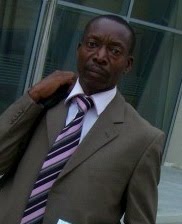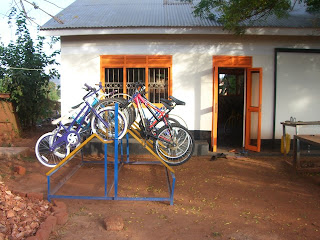This wonderful speech at the ASEAN conference holds true to all developing nations. Copyright of its author.
EDUCATION AND TRAINING FOR A LIFE OF DIGNITY
Address by Rodolfo C. Severino, Secretary-General
of the Association of Southeast Asian Nations
at the conference on Social Development and Poverty Reduction
Through Vocational and Technical Education organized
by the Myanmar Federation of Chambers of Commerce and Industry,
the Myanmar Institute of Strategic and International Studies,
and the Ramos Peace and Development Foundation,
and sponsored by the Hanns Seidel Foundation
Yangon, 6 February 2002
I welcomed with great eagerness the invitation to participate in this conference. It is not just because I have been associated in one way or another with all its sponsors, although that is a good enough reason. I have encountered the Myanmar Federation of Chambers of Commerce and Industry at events involving the ASEAN Economic Ministers and the ASEAN Chambers of Commerce and Industry. The Myanmar Institute of Strategic and International Studies is headed by a distinguished ASEAN colleague and friend, U Thaung Tun; it used to be led by another friend and colleague in ASEAN, U Aye Lwin, who is one of the moving forces of this conference. The Hanns Seidel Foundation and the ASEAN Secretariat have collaborated fruitfully in many valuable projects. And the Ramos Peace and Development Foundation is chaired by my former boss, President Fidel V. Ramos, and is named after another former boss, the late Secretary of Foreign Affairs, Narciso G. Ramos.
Because of all these, I am happy to be here.
But I was also attracted by the theme of the conference: “Social Development and Poverty Reduction through Vocational Training and Technical Education in the ASEAN Region.” Now, the subject of vocational training and technical education sounds like a humdrum matter that would make most people’s eyes glaze in boredom, something of interest only to those in the field. However, to me, the choice of theme is highly inspired, because it puts vocational training and technical education in the context of social development and poverty reduction. The way the subject is presented today gives the work of vocational training and technical education a larger meaning, a meaning beyond developing human resources as a factor of production. It reminds us that we must upgrade the skills of the human person not just to make him more capable of increasing profits for the capitalist or for the state but, above all, to improve the life of the person and his family, to enhance their dignity through work and honest income, and to enrich society as a community of human beings. The theme adopted for our conference lends human resource development, of which vocational training and education is an essential part, added weight and gravity and the deep significance that it deserves.
ASEAN looks at human resource development, including vocational and technical training, from this point of view. HRD, of course, is essentially a national responsibility, sometimes with international help. However, we in ASEAN find it useful to cooperate on a regional scale if only to learn from one another, inspire one another with regional examples of “best practices,” and pool our efforts and resources in order to cut costs.
In this, we give special attention to enabling women and out-of-school youth to gain skills. We conduct skills competition among the youth. We are forming a network of skills training institutions. We are promoting the mutual recognition of skills among the member-states in order to improve workers’ mobility within the region and thus their chances for employment. We share experiences in helping workers acquire skills in information technology. We are setting up a monitoring system for labor markets to anticipate changes in demand for labor. Together with international financial institutions, we advocate the inclusion of human resource development at the core of national development plans.
At the mandate of ASEAN’s leaders, the ASEAN Secretariat and all ASEAN bodies undertook last year a mid-term review of the implementation of the Ha Noi Plan of Action, which the leaders issued in December 1998 as a guide for ASEAN cooperation in the next six years. Many of the activities prescribed in the HPA either had been completed or had made substantial progress. In the case of other projects, we found that we had to step up our work to upgrade the human capacity for their effective implementation.
HRD Vital to Regional Cooperation
This has strengthened our conviction that HRD is vital not only to national development but also to regional integration and cooperation. This is why HRD occupies a central place in the Initiative for ASEAN Integration, or IAI. The IAI is the program adopted by ASEAN’s leaders as the principal instrument for closing the development gap between ASEAN’s older and newer members. The program has four components – infrastructure, information and communications technology, regional economic integration, and human resource development.
Last November, officials from all ten members of ASEAN got together in Phnom Penh to draw up a work plan for carrying out the IAI. In terms of HRD, the work plan calls for building the capacity of the newer members – Cambodia, Laos, Myanmar and Viet Nam – to do planning, management and needs assessment for national HRD programs and to draw up annual HRD plans. It includes the training of trainers, the publication of training manuals, and the provision of scholarships. The teaching of English – ASEAN’s working language – is stressed. The work plan also aims to improve vocational training programs, develop training in ICT, strengthen labor market monitoring, and develop a skills recognition system. HRD occupies a central place in the IAI, because ASEAN’s newer members themselves insist on it, recognizing its critical importance to their development.
But HRD also runs as a common thread through the three other components of the IAI work plan – infrastructure, ICT and regional economic integration. For example, HRD is considered as necessary for strengthening the newer members’ capacity to implement the ASEAN agreement on facilitating goods-in-transit. It is also important for enabling them to participate in ASEAN’s other transport and energy schemes. The IAI work plan calls for national master plans for developing ICT human resources. It involves the training of ICT trainers. It envisions private-sector participation in training local communities in the use of ICT. The work plan projects the use of ICT in networking ASEAN educational and vocational training centers and for distance-learning. Of course, the use of ICT for commerce – or e-commerce – requires the training of sellers and buyers and the service-providers that are the link between them. For government transactions – or e-government – government officials and citizens doing business with government have to be trained.
To enable the newer members to integrate themselves in the regional economy, the IAI work plan calls for the training of officials to take effective part in the ASEAN Free Trade Area, including the development of skills for negotiating trade agreements and data collection. The training of customs officers is important for the success of AFTA. The work plan also envisions skills training for setting up and participating in trade fairs and exhibitions.
Beyond Economics
ASEAN thus considers human resources to be of central importance to all its purposes. Indeed, this importance stands out even if we consider it only from the economic standpoint. Throughout the history of economic activity, human resources are a vital, even the vital, factor in the production process, in marketing, in distribution, in the whole chain of economic transactions. This is especially and increasingly so in the processes and development of a knowledge economy. It is so in a global economy in which services play a larger and larger role. Investors invariably enter the availability of adequate human resources into their calculations. One of the first questions investors ask in deciding whether to make their investments -- and where – is this: will I have enough trained, or at least trainable, people to have a good chance for my investment to succeed? We can truly say that a country’s development and progress largely depend on the availability and quality of its human resources, people with the right skills and the right attitude. This is obvious enough.
However, human resource development transcends the merely economic. At the most fundamental level, it is essential not only to enhance people’s chances of getting jobs and raising their incomes but for the fulfillment of a man’s or a woman’s human potential. Work has everything to do with human dignity and self-respect. Think of the millions of human beings, including children, who are forced into illicit, destructive and often fatal occupations and lives of unimaginable degradation and despair for want of the skills required for respectable, dignified and productive work.
Human resource development also has a profound social and political dimension. HRD, even vocational training and technical education, produces an enlightened citizenry. Since higher incomes and a degree of urbanization result from it, HRD builds up the middle class. It thus lays the necessary foundation for effective, participatory democracy. With their minds and discernment sharpened, as they become more capable of articulating their interests in an organized way, people are better able and more qualified to participate in their own governance.
Skilled and educated people are, of course, no guarantee of democracy. The countries of Eastern Europe and many nations of Latin America have had large numbers of educated and skilled people for many decades, even centuries. And yet, they have had to submit to autocracies of one form or another and at one time or another. On the other hand, even in countries that practice electoral democracy and enjoy free speech and a free media, a large skilled and educated middle class is no guarantee of effective governance. So, even a critical mass of educated and skilled people in a substantial middle class is not an assurance of either the effectiveness of governance or the people’s authentic participation in it. But, clearly, such a critical mass is essential for governance that is both democratic and effective.
If our objectives for each country are a polity that is both democratic and effective, sustainable progress for its economy, stability for its society, and a life of dignity for its people, education and training are the indispensable endeavor. This is why I think Myanmar is doing the right thing in regarding education and training in the context of poverty reduction and social development. The international community ought to support it and encourage it. It is the way to go. It is an effective way, as boycotts and isolation and confrontation often are not.
The ASEAN Secretariat supports and encourages events like this. So does the Hanns Seidel Foundation, which has for many years been quietly backing HRD-related activities not only in Myanmar but also in the other newer members of ASEAN and in ASEAN as a whole. And I welcome the participation of the Ramos Peace and Development Foundation in this endeavor.
Education and training are the candle of hope lighting the darkness of political inefficacy, poverty, and human degradation. They are a lot better and more effective than cursing the darkness.










































